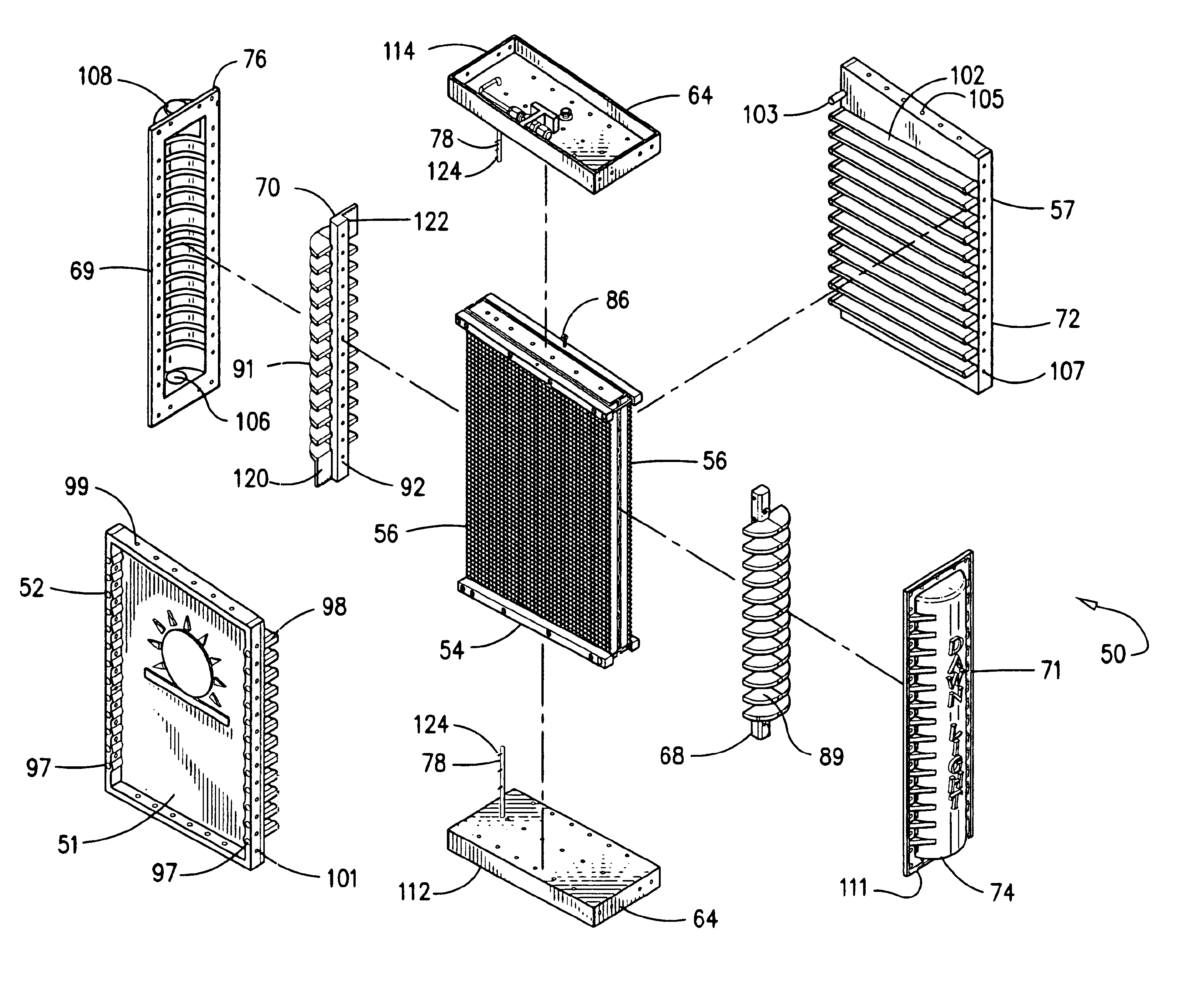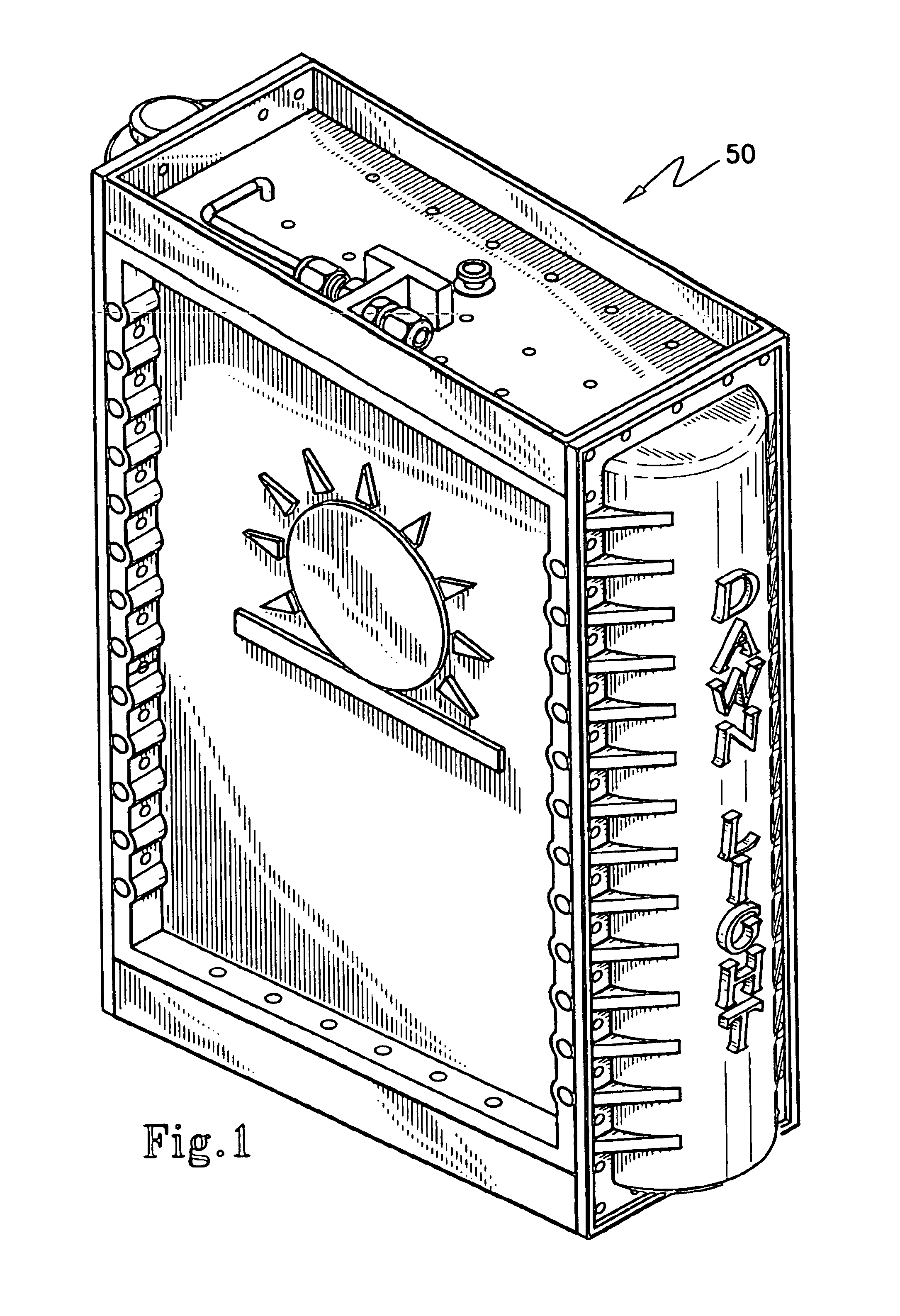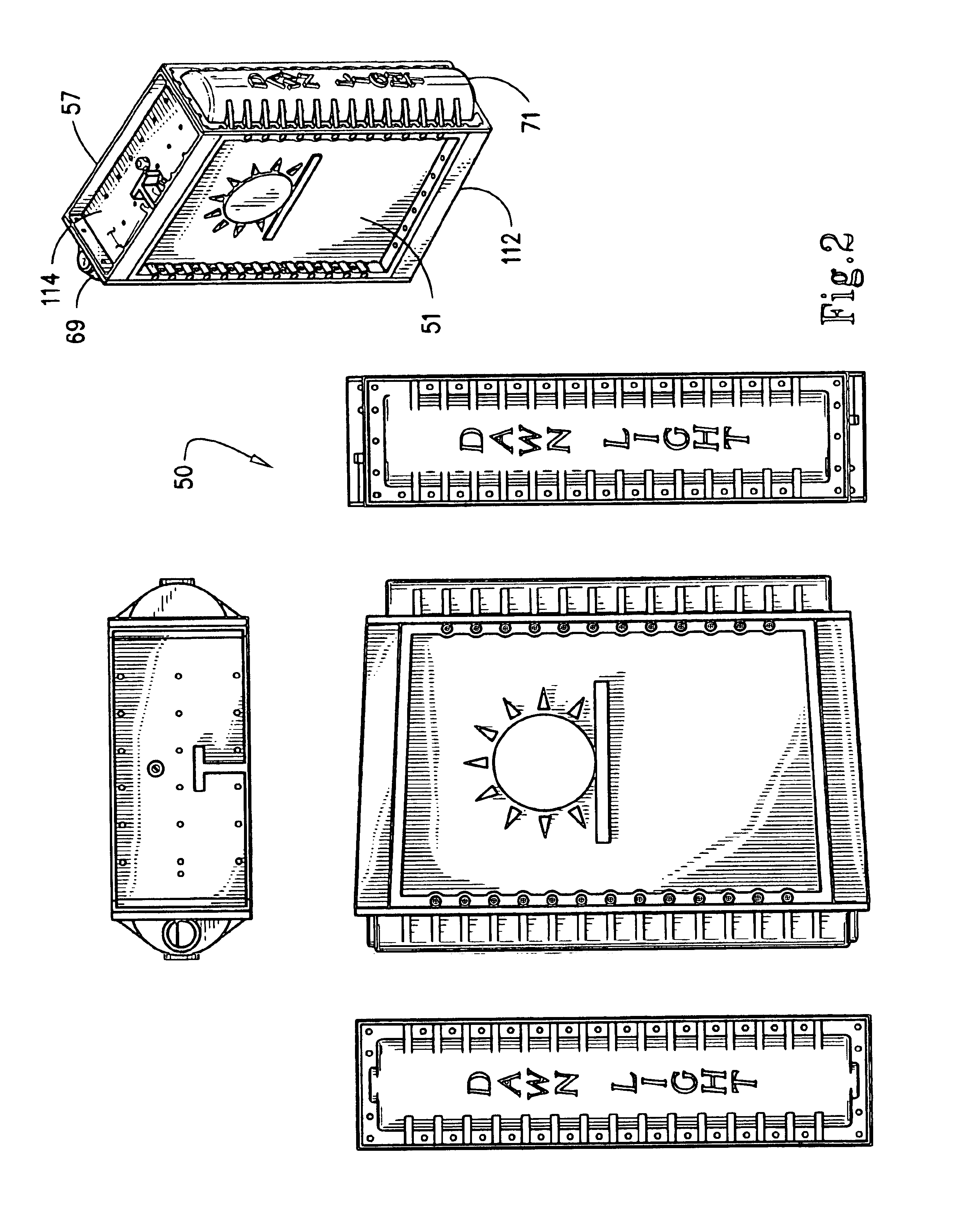Redox bipolar cell fabric washer system
- Summary
- Abstract
- Description
- Claims
- Application Information
AI Technical Summary
Benefits of technology
Problems solved by technology
Method used
Image
Examples
Embodiment Construction
The present invention is a redox bipolar cell in a fabric washing machine utilizing tap water with a low oxidation reduction potential and producing charged wash water by an electrochemical reaction to elevate the oxidation reduction potential of the wash water to remove contaminants from soiled fabrics forming charged waste water, without the use of a detergent. The redox bipolar cell includes a housing, that has an inlet aperture for the tap water or the charged recycled wash water, an outlet aperture for the charged wash water, an inlet opening for the tap water to form an electrolyte, an outlet opening for a hydrogen rich electrolyte, and a plurality of electrical connections. The redox bipolar cell also includes a plurality of cathodes, ion exchange membranes, and anode plates that are all disposed within the housing, the cathode and anode plates are separated by the membranes. Also a cathode spacer plate is positioned between the cathode plates that are disposed within the hou...
PUM
| Property | Measurement | Unit |
|---|---|---|
| Current | aaaaa | aaaaa |
| Current | aaaaa | aaaaa |
| Current | aaaaa | aaaaa |
Abstract
Description
Claims
Application Information
 Login to View More
Login to View More - Generate Ideas
- Intellectual Property
- Life Sciences
- Materials
- Tech Scout
- Unparalleled Data Quality
- Higher Quality Content
- 60% Fewer Hallucinations
Browse by: Latest US Patents, China's latest patents, Technical Efficacy Thesaurus, Application Domain, Technology Topic, Popular Technical Reports.
© 2025 PatSnap. All rights reserved.Legal|Privacy policy|Modern Slavery Act Transparency Statement|Sitemap|About US| Contact US: help@patsnap.com



